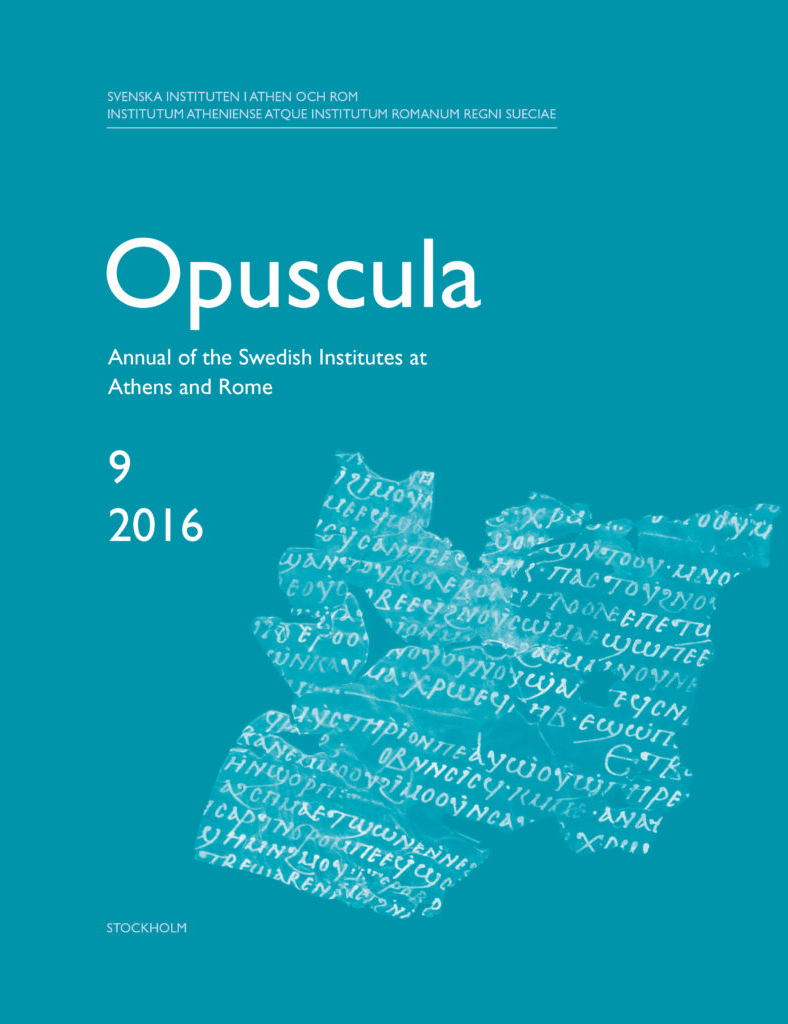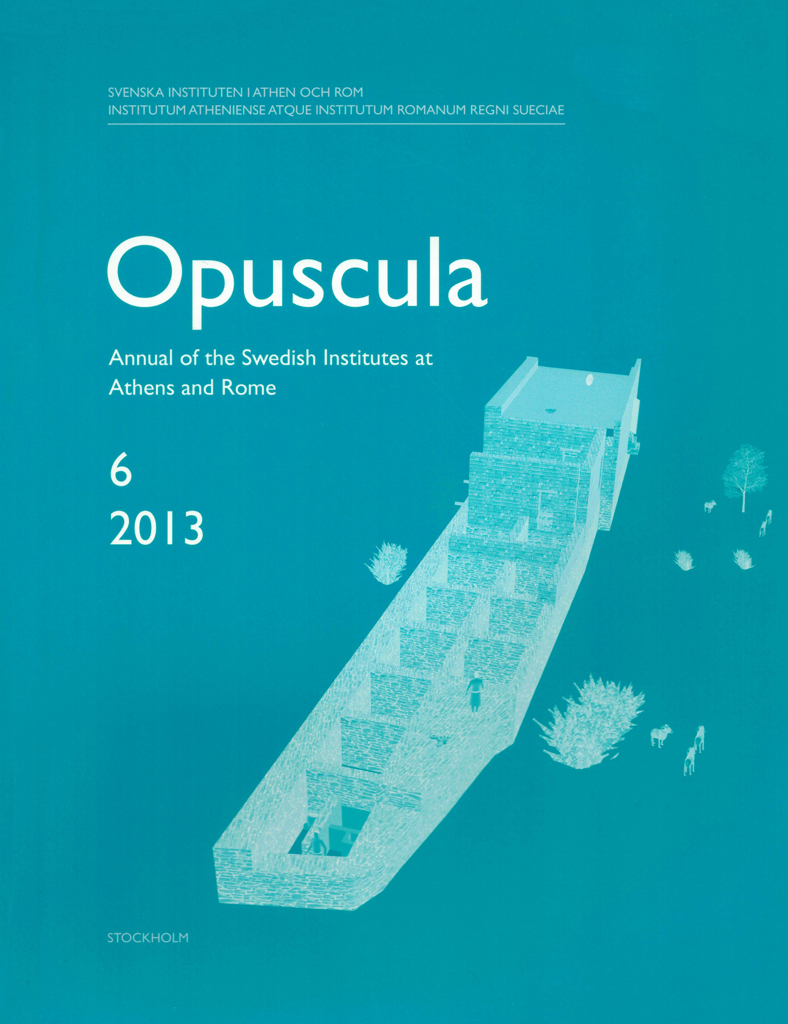Opuscula is published by the Swedish Institutes at Athens and Rome, with the aid of a grant from the Swedish Research Council. Distributed by Eddy.se AB. View journal at ERIH PLUS. All content available with open access. People and plants. Piecing together archaeological and archaeobotanical data to reconstruct plant use and craft activities in Mycenaean Tiryns By Melissa Vetters, Ann Brysbaert, Maria Ntinou, Georgia Tsartsidou & Evi Margaritis Abstract Archaeobotanical data are often employed to reconstruct a site’s or a region’s palaeoecology, human use of plants such as agricultural regimes, and the interplay between vegetation and anthropogenic factors in the palaeoenvironment. This paper aims to show that a context-specific integration of such data helps to guide the focus beyond the macroscale and may thus add significantly to the reconstruction of microscale activity areas. New archaeobotanical data from four different find spots in the Lower Citadel of Tiryns, Greece, dating to the Mycenaean Palatial and Post-Palatial periods highlight the importance of combining the analysis of the fruit/seed macroremains with anthracological and phytolith studies and integrating these results in their archaeological contextual study. Based on the data from botanical non-wood macroremains, wood charcoal, and phytoliths, the paper discusses methodological issues such as…
Opuscula is published by the Swedish Institutes at Athens and Rome, with the aid of a grant from the Swedish Research Council. Distributed by Eddy.se AB. View journal at ERIH PLUS. All content available with open access. A moving story about exotica: objects’ long-distance production chains and associated identities at Tiryns, Greece By Ann Brysbaert & Melissa Vetters Abstract Studying materials through a chaîne opératoire approach is common practice in studying craft activities. Whilst unravelling a chain of production can be very rewarding, many issues still arise: can all the steps be captured even when no material evidence is present, i.e. how can we approach production chains in the case of inconsistently or partially preserved material in settlement contexts? How may the steps that we are able to observe be contextualized in order to inform us about interconnected activities? In our research project carried out at Tiryns, Greece, we map certain steps through the production and consumption journey of a series of objects and materials, some of which have been referred to as “exotica”. Our aim was to understand the life histories of those specific items, and with that, those of the people associated with them. In problematizing the etic…


